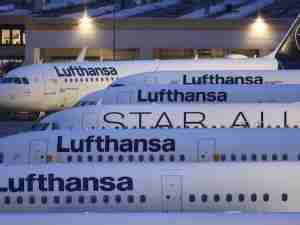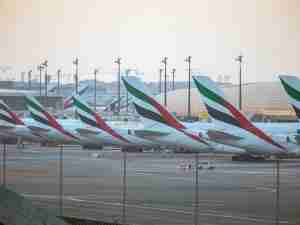Fitch Ratings has affirmed the 'A' rating on approximately $1.5 billion of outstanding airport revenue bonds issued by the City of Philadelphia, Pennsylvania on behalf of Philadelphia International Airport (PHL). The Rating Outlook is Stable. Fitch does not rate the issuer's series 2017 taxable private placement.
KEY RATING DRIVERS
The rating reflects PHL's role as the main air service provider to a large and stable service area that generates a solid base of origination and destination (O&D) traffic, offset by a high degree of concentration in American Airlines (BB-/Stable) and some connecting traffic exposure. PHL's strong residual airline agreement provides for full recovery of operating expenses and debt service costs, but also results in narrow coverage and liquidity levels. Rising airline costs and elevated leverage are expected to continue in the medium term, as additional capital-related borrowings are passed through to airlines, though signatory carriers have approved the airport's capital plan, signaling their ongoing commitment.
Sizable American Airlines Hub - Revenue Risk (Volume): Midrange
PHL's service area is the large and stable Philadelphia MSA, which provided around 10 million O&D enplanements in FY2017 (10-year CAGR of 0.1%). PHL is a leading connecting hub for American Airlines, which lends to sizable carrier concentration of 70% and connecting traffic exposure of 33%. Service reduction risk is partially mitigated by American's long-standing presence at the airport, which Fitch expects to persist. Fitch views favorably PHL's low historical peak-to-trough traffic volatility, reflecting the stability of American Airlines and the Philadelphia MSA.
Strong Cost-Recovery Framework - Revenue Risk (Price): Stronger
The airport benefits from a five-year, fully residual airline use and lease agreement (AUL) through fiscal year 2020, which effectively provides for 100% recovery of operating expenses and debt service costs. PHL's rising cost per enplaned passenger (CPE) level, which increases from the current $15 range to $20 by FY2023 under Fitch's rating case, is mitigated in part by the airport's franchise strength and airline support for the capital program.
Largely Debt-Funded Capital Plan - Infrastructure Development and Renewal: Midrange
The airport's seven- to 10-year Capital Development Program (CDP) is sizable at $2 billion and focuses primarily on airfield improvements, terminal redevelopment and expansion, and ground transportation enhancements. Around 62% of the CDP will be funded with commercial paper or long-term debt, including the 2017 bonds. Notably, the capital program's projects and funding sources are subject to change over time based on the operational needs of the airport.
Sound Structural Protections - Debt Structure: Stronger
PHL benefits from all senior, fully amortizing debt with no material exposure to variable interest rates as all debt is either fixed rate or synthetically fixed. Structural features are considered adequate, with additional cash funding of reserves in the 2017 bonds balanced with somewhat lenient rate covenants. Over the intermediate term, additional debt will cause PHL's leverage to remain elevated but manageable, while annual debt service will increase but remain generally front-loaded.
Financial Profile
The airport has historically managed to debt service coverage levels of around 1x (excluding fund balances) and liquidity of around 100-150 days cash on hand (including interdepartmental charges). These metrics are considered narrow relative to large hub peers yet adequate for airports with residual AULs, as the agreements limit bottom-line cash flow volatility. These narrow levels also limit PHL's ability to fund its capital plan without affecting the airline rate base. Fitch's rating case expects leverage to decline from the current 10x level to around 8x by FY2023, reflecting EBITDA growth and improved cash balances via cash-funding of reserve funds and improved unrestricted cash relative to historical levels.
PEER GROUP
Philadelphia is compared with the airports of Miami (A/Stable) and Charlotte (AA-/Stable), both of which serve as American Airlines hubs and exhibit carrier concentration and connecting traffic exposure. Charlotte's higher rating reflects significantly lower costs, with CPE of around $3 in Fitch's rating case, low leverage of under 3x, and stronger liquidity and debt service coverage of nearly 3x, despite its higher exposure to American Airlines' hubbing operations. Miami is able to achieve the same rating as Philadelphia despite slightly higher leverage in the 11x range and CPE already around $20 due to its stronger traffic base as a leading international gateway hub.
RATING SENSITIVITIES
Future Developments That May, Individually or Collectively, Lead to Negative Rating Action:
--A material reduction in, or elimination of, American's hubbing activity, which reduces financial flexibility;
--Inability to maintain leverage levels at or below 10x to 11x on a sustained basis;
--Inability to maintain a minimum of 1x net revenue debt service coverage.
Future Developments That May, Individually or Collectively, Lead to Positive Rating Action:
--Upward rating movement is unlikely over the near term given PHL's single carrier concentration and sizable borrowing plans.
CREDIT UPDATE
Performance Update
Following a 5.6% drop in enplanements in FY 2017 due to the restructuring of American's hubbing activity at PHL, enplanements grew by 3.0% to 15.2 million in FY 2018, for a flat zero percent five-year CAGR. Specifically, American enplanements grew by 2.6% (following a 9% decline in FY 2017) to 10.6 million, representing a 70% market share, in line with FY17 levels but down from the peak of 77% in 2014. Origin and destination (O&D) traffic at the airport remained stable at around 67% of overall enplanements, or approximately 10.2 million, and has grown over the past five years at a five-year CAGR of +2.4%, in comparison to the connecting traffic five-year CAGR of -5.7% related to American downsizing its hubbing operations. International enplanements fell slightly in FY 2018 to 2 million, representing 13% of total enplanements for a -1.8% five-year CAGR.
Financial performance for FY 2018 (estimated based on unaudited data) performed generally in line with Fitch's expectations and the issuer's budget. Airline revenues were slightly lower than expected, allowing CPE to come in slightly lower than FY17 but still in the $15 range. Expenses continue to grow above inflation with a 4.6% increase in FY 2018, in line with the five-year CAGR of 4.5% through 2018. Leverage was slightly below expectations due to a stronger cash position at the airport, though it remains above 10x at FY2018 based on additional debt issued during the year for the capital program. Debt service coverage as calculated by Fitch (including interdepartmental charges, excluding fund balance) remained relatively narrow at just above 1.0x.
PHL has a sizable $2 billion capital development plan (CDP), covering the next seven to 10 years, which reflects a shift in priorities from airfield capacity to terminal, landside, and cargo development. The plan is 62% funded from long-term debt, including the 2017 bonds, $385 million expected to be issued in FY2021, and a $433 million issuance in outer years. Other major funding sources for the CDP include PFCs and grants (17%) and CFC revenues (16%). Around $813 million will be spent on terminal and landside improvements, including $420 million on the terminal redevelopment and expansion, and over $300 million on general infrastructure upgrades to buildings. $668 million of the CDP is allocated to airfield improvements, including a $200 million runway extension and $250 million for other airfield infrastructure projects. The CDP also includes $312 million for a ground transportation center, funded primarily from CFCs, which remains in the planning phase at this time.
Fitch Cases
Fitch's base case assumes O&D enplanement growth of 1.5% per year from FY 2019-2023, with no growth in connecting traffic, for an overall CAGR of 1.0%. Operating expenses increase above the rate of inflation (2018-2023 CAGR of 3.6%), but slightly below the historical growth rate. Airline revenues increase at a CAGR of 5.5% to reflect the increased expenses and debt service costs passed through to airlines under the AUL, while non-airline revenue grows at a 2.4% CAGR. DSCR under the base case averages just north of 1.0x, while leverage peaks at 10.4x in FY2018 and devolves to 7.6x by FY 2023. Fitch base case CPE averages $16 over the forecast and reaches above $18 by FY 2023; similar CPE levels being projected in PHL's most recent feasibility study.
Fitch's rating case incorporates more severe stresses to connecting traffic, given the more volatile connecting traffic profile. The rating case assumes a cumulative enplanement decline of 5.3% over FY 2020 and FY 2021, with recovery in O&D traffic thereafter but no recovery in connecting traffic. Financially, Fitch assumes a more conservative non-airline revenue growth CAGR of 1.9% and expense growth at a 3.8% CAGR. Cash balances are lower than the base case given the enplanement stress scenario, resulting in higher leverage (devolving to 8.0x by FY 2023) and higher CPE (reaching just over the $20 level by FY 2023).
In general, Fitch's cases assume that PHL will maintain narrow debt service coverage (including interdepartmental charges and excluding fund balances) just north of 1.0x, with the ability to recoup projected growth in debt service and operating expenses from the airlines based on the fully residual AUL, which primarily affects leverage and CPE. Fitch expects American to continue to emphasize Philadelphia as a connecting hub, especially among regional flights in the Northeast and as a transatlantic gateway. Given the high proportion of connecting traffic and elevated single-carrier exposure, Fitch performed an additional stress that removes 50% of connecting traffic in FY 2020. This unlikely scenario would result in CPE of over $23 by FY2023, a level which would likely prompt some reconsideration of expenses or capital needs.
Asset Description
The city of Philadelphia's airport system consists of PHL, the principal commercial airport serving the Philadelphia metropolitan area, as well as Northeast Philadelphia Airport, a general aviation reliever facility. The airport system is owned by the city of Philadelphia and operated by the city's division of aviation.
Security
The bonds are secured by the net revenues generated through the operations of the airport. In addition, the airport may pledge certain passenger facility charge (PFC) revenues for eligible projects.
A January 2018 district court ruling that dismissed claims regarding payment of Puerto Rico Highways and Transportation Authority debt has raised questions about the scope of protections provided by Chapter 9 of the U.S. bankruptcy code to bonds secured by pledged special revenues. Fitch's rating criteria treat special revenue obligations as independent from the related municipality's general credit quality. The outcome of the litigation could result in modifications to Fitch's approach. For more information, see "What Investors Want to Know










